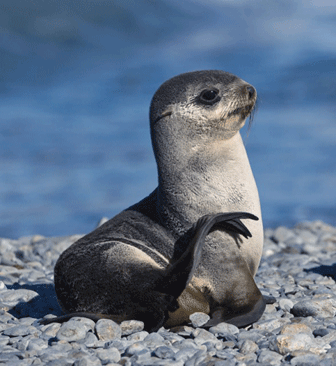Antarctic Fur seal

Scientific Classification
Kingdom: Animalia
Phylum: Chordata
Class: Mammalia
Order: Carnivora
Family: Otariidae
Genus: Arctocephalus
Species: A.gazella
Kingdom: Animalia
Phylum: Chordata
Class: Mammalia
Order: Carnivora
Family: Otariidae
Genus: Arctocephalus
Species: A.gazella
Description
Antarctic fur seal have teeth, whiskers and thick fur, like to the coat of a dog. They don't have layers of fat similar to other seals but rely on their thick fur coat to keep them hot.
Size
Male fur seals can weigh up to 200kg, female fur seals weigh about 40 kg, and at birth, pups weigh between 3 and 7 kg.
Diet
These lively seals are very winning at finding attentiveness of food; some of them staying Antarctica to give to eat on krill. Fur seals at South Georgia feed mostly on krill while at Heard Island and at Macquarie Island they feed mostly on fish, and some squid.
Breeding
Fur seals breed on land, mostly on sub Antarctic islands south of the Antarctic meeting including the South Orkney and South Shetland Islands, South Georgia, South Sandwich Islands, Bouvet Island, Iles Kerguelen, and Heard Island, with only three colonies (on Marion Island, Iles Crozet, and Macquarie Island) lying north of the meeting. Male Antarctic fur seals found territories during fighting with other males. The leading bulls control a piece of a beach from the waters border to the vegetation at the back. Territorial bulls provide off a strong sweet musk odour through the breeding period.Female Antarctic fur seals are not gathered into the harems as elephant seals are. Females are outgoing and select the best beach site on dry gravel. Males vigorously discourage females touching to other territories. Pups are born from behind November to early on January and are suckled for regarding 4 months.
 Deep Sea Crabs
Deep Sea Crabs